I finally found a part of Singapore that is not perfect. The direct path from the city center to Singapore’s Chinatown took me through the Chinese food sector. Here, although the streets were still litter free, the odor emanating from the markets and restaurants was a mixture of soy sauce, sweet and sour sauce, and rotting meat. The smell was so rancid I nearly lost the contents of my stomach a couple of times. All Chinese markets have this smell in common and they have never before bothered me in quite this way. But ever since I unexpectedly found myself in a Chinese meat market in Vietnam, where rotting pigs heads sat on outdoor counter tops aside putrefying rows of stuffed sausages, I find I cannot tolerate the odor of rotting meat. I held my breath and passed through the area as quickly as possible, grateful not to have embarrassed myself by throwing up all over the sidewalk amidst the throngs of shoppers.

The heart of Chinatown is a long pedestrian mall that is accessed from an overpass leading from one of the city’s busier avenues. A brightly painted latticework canopy, supported by tall wooden beams, provides shade in the sizzling Singapore midday heat. Red and gold Chinese paper lanterns zig-zag overhead, while red, green and gold patio umbrellas line the sidewalks.
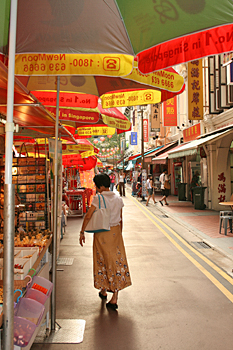
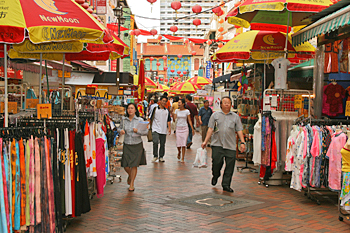
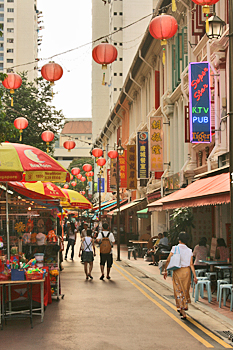
Side streets shoot off from the main pedestrian mall, each with their own particular decor – some string maroon ribbons overhead from side to side while others sport riotous neon signs the length of the street. Buildings are multi-colored; some facades have even been painted with giant flowers. In the midst of all this riotous color, business was brisk. In some places, the crowds were so thick that I had to elbow my way through.


Where the pedestrian mall ended I stumbled upon the Temple of the Buddha Tooth Relic. Yes, it’s just what it sounds like – they claim to possess one of the Buddha’s teeth, which has been encased in the top knot of a giant golden Stupa on the top floor of the temple. It is a Tibetan Buddhist Temple and a large proportion of the Buddhist population of Singapore worships here.
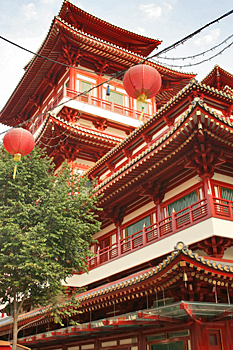
A bit further on I discovered the Tanjong Pagar neighborhood of Chinatown, where all the houses are narrow three-story town homes that were originally built as residences but have been converted to business uses over the years. To differentiate between the properties, merchants have painted each a different color, in many cases installing neon signs overhead or in the windows.
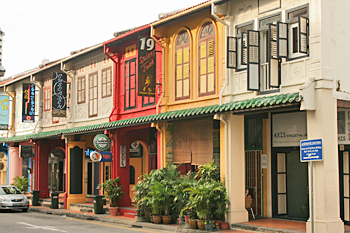
Unfortunately, Singapore’s Chinatown is shrinking. Because this is a highly-sought neighborhood, existing buildings are being bought up by developers and torn down to make way for new high rises. What was once a community that spanned more than a square mile is now just a few blocks square. But what does remain is worth a visit, if only because it delights the senses – at least after you get past the rotting meat section.
